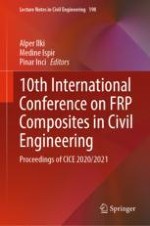This volume highlights the latest advances, innovations, and applications in the field of FRP composites and structures, as presented by leading international researchers and engineers at the 10th International Conference on Fibre-Reinforced Polymer (FRP) Composites in Civil Engineering (CICE), held in Istanbul, Turkey on December 8-10, 2021. It covers a diverse range of topics such as All FRP structures; Bond and interfacial stresses; Concrete-filled FRP tubular members; Concrete structures reinforced or pre-stressed with FRP; Confinement; Design issues/guidelines; Durability and long-term performance; Fire, impact and blast loading; FRP as internal reinforcement; Hybrid structures of FRP and other materials; Materials and products; Seismic retrofit of structures; Strengthening of concrete, steel, masonry and timber structures; and Testing. The contributions, which were selected by means of a rigorous international peer-review process, present a wealth of exciting ideas that will open novel research directions and foster multidisciplinary collaboration among different specialists.
